Using Highlights and Lowlights to Create Depth and Texture | A Pro Guide to Multidimensional Hair Color
From Flat to Fabulous: The Power of Dimensional Hair Color
Walk into any professional hair salon, and you'll hear stylists discussing dimension, depth, and texture. These aren't just buzzwords; they are the fundamental principles of transformative hair color. While a single, all-over color can be beautiful, it can sometimes appear flat or one-dimensional. The true artistry lies in creating a dynamic, living canvas of color that moves and shifts with the light. This is achieved by masterfully using highlights and lowlights to create depth and texture. This technique is the secret behind the effortlessly chic, voluminous, and vibrant hair you see on celebrities and style icons. It’s a bespoke approach that turns simple hair color into a three-dimensional work of art, tailored to enhance your features, haircut, and personal style.
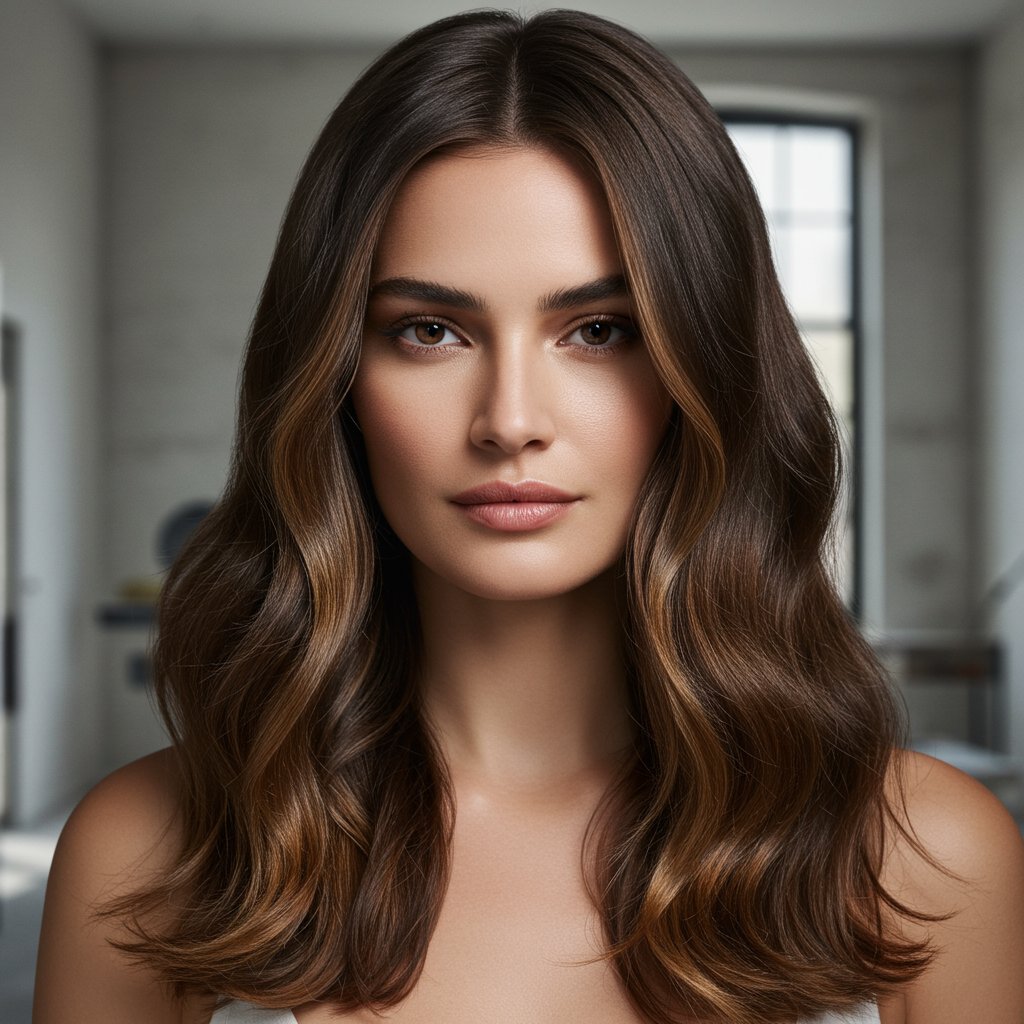
Understanding how this interplay of light and shadow works is key to communicating your hair goals to a stylist and appreciating the craft involved. Highlights introduce brightness, mimicking where the sun would naturally lighten your hair, while lowlights add shadow and richness, creating the illusion of density and volume. Together, they form a powerful duo that can solve a multitude of hair concerns—from making fine hair appear fuller to adding movement to thick, heavy hair. This guide will delve deep into the world of dimensional color, exploring the techniques, benefits, and maintenance required to achieve and preserve that coveted salon-perfect finish. Prepare to see hair color not just as a shade, but as a structural element that can reshape and redefine your entire look.
---
The Art of Dimension: What are Highlights and Lowlights?
At its core, creating dimensional hair color is an exercise in optical illusion, much like a painter uses light and shadow to create depth on a canvas. Your stylist is the artist, and your hair is the medium. The primary tools for this artistry are highlights and lowlights, two distinct but complementary techniques that are fundamental to modern hair coloring. Understanding their individual roles and how they collaborate is the first step toward achieving a truly customized and flattering result. They are the building blocks of everything from a subtle, sun-kissed glow to a bold, high-contrast statement.
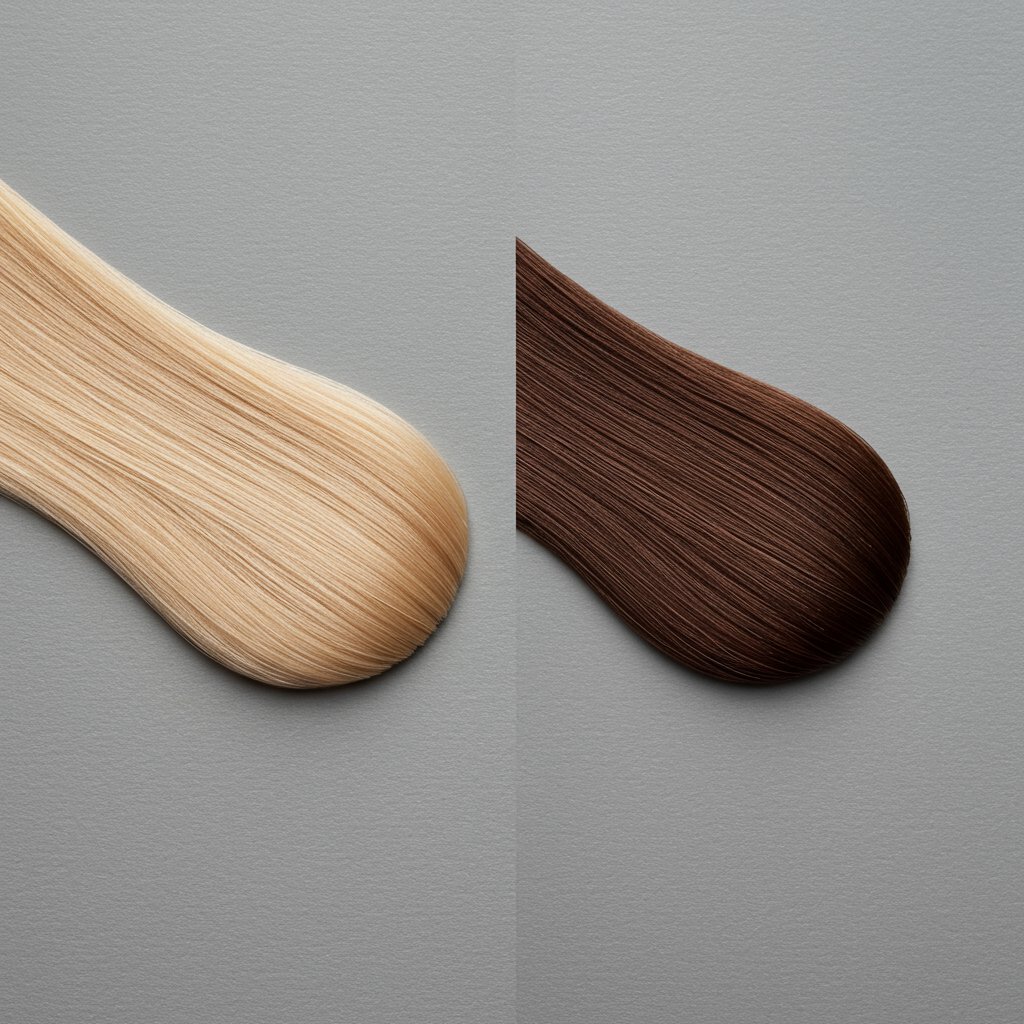
Defining Highlights: The Illusion of Light
Highlights are sections of hair that are woven out and lightened to be a few shades brighter than your base color. Their primary function is to bring light to the hair, creating brightness, catching the eye, and mimicking the natural effects of sun exposure. When strategically placed, highlights can illuminate your complexion, bring out the color of your eyes, and add a youthful, radiant glow. They are perfect for adding sparkle to brunettes, vibrancy to redheads, and a classic sun-kissed look to blondes. The process typically involves a lightener applied to select strands, which are often isolated in foils or painted on freehand in a technique known as balayage.Defining Lowlights: The Power of Shadow
Lowlights are the opposite of highlights. Instead of lightening, a stylist will select strands of hair and color them a few shades darker than your base color. This technique is all about creating shadow and depth. By adding these darker ribbons of color, you create a contrast that makes the surrounding hair—especially the highlights—pop even more. Lowlights are a secret weapon for adding richness and dimension, preventing blonde hair from looking too solid or brassy, and, most importantly, creating the illusion of thicker, fuller hair. For those with fine hair, lowlights are a game-changer, as the added depth provides an immediate visual boost in volume and density.The Synergy: How They Work Together
While highlights or lowlights can be used on their own, their true power is unleashed when they are used in tandem. The strategic placement of both light and dark tones creates a sophisticated, multi-tonal effect that is impossible to achieve with a single color. The highlights bring forward certain sections of the hair, while the lowlights cause other sections to recede. This push-and-pull dynamic is precisely how stylists use highlights and lowlights to create depth and texture. The final result is hair that looks alive with movement, richness, and an intricate, woven pattern of color that changes beautifully in different lighting conditions.---
Beyond Brightness: How Highlights and Lowlights Build Texture
When we talk about texture in the context of hair color, we're not referring to the physical feel of the strands but rather the visual texture. It's the illusion of movement, separation, and detail within the hair. A single, flat color can make even the most beautifully cut hair look like a solid helmet. Dimensional color techniques, however, shatter this uniformity, introducing a landscape of varying tones that guide the eye and create a more interesting and dynamic visual experience. This is where the strategic application of highlights and lowlights truly shines, transforming the hair's surface into a detailed tapestry.

Breaking Up Monotony for Visual Interest
Imagine a solid-colored wall versus one with a subtle, textured paint finish. The textured wall has more character and depth. The same principle applies to hair. By weaving in lighter and darker pieces, a colorist breaks up the solid block of color. This prevents the hair from looking flat and heavy. Each strand catches the light differently, creating a vibrant, shimmering effect that is full of life. This is especially crucial for long hair or simple cuts, where color becomes the primary feature for adding excitement and style.Enhancing Natural Waves and Curls
For those with wavy or curly hair, highlights and lowlights are a phenomenal tool for enhancing natural texture. A skilled stylist can apply color in a way that follows the hair's natural pattern. Lighter pieces are often placed on the crest of the waves or the outer bend of a curl, which makes them pop and appear more defined. Conversely, lowlights are placed in the 'valleys' or inner curves, creating shadows that exaggerate the shape and bounce of the curls. This technique, sometimes called 'curl painting' or 'ribboning', makes curls look more structured, less frizzy, and incredibly vibrant.---
The Strategic Placement: Techniques for Creating Depth
The final effect of your highlights and lowlights is less about the colors themselves and more about where and how they are applied. Placement is everything. A master stylist thinks like a sculptor, considering your head shape, face shape, haircut, and even how you part your hair. The goal is to place light and shadow in a way that enhances your best features and supports the structure of your hairstyle. Different application techniques, from traditional foils to modern balayage, offer varying levels of precision and subtlety, allowing for a completely customized result.
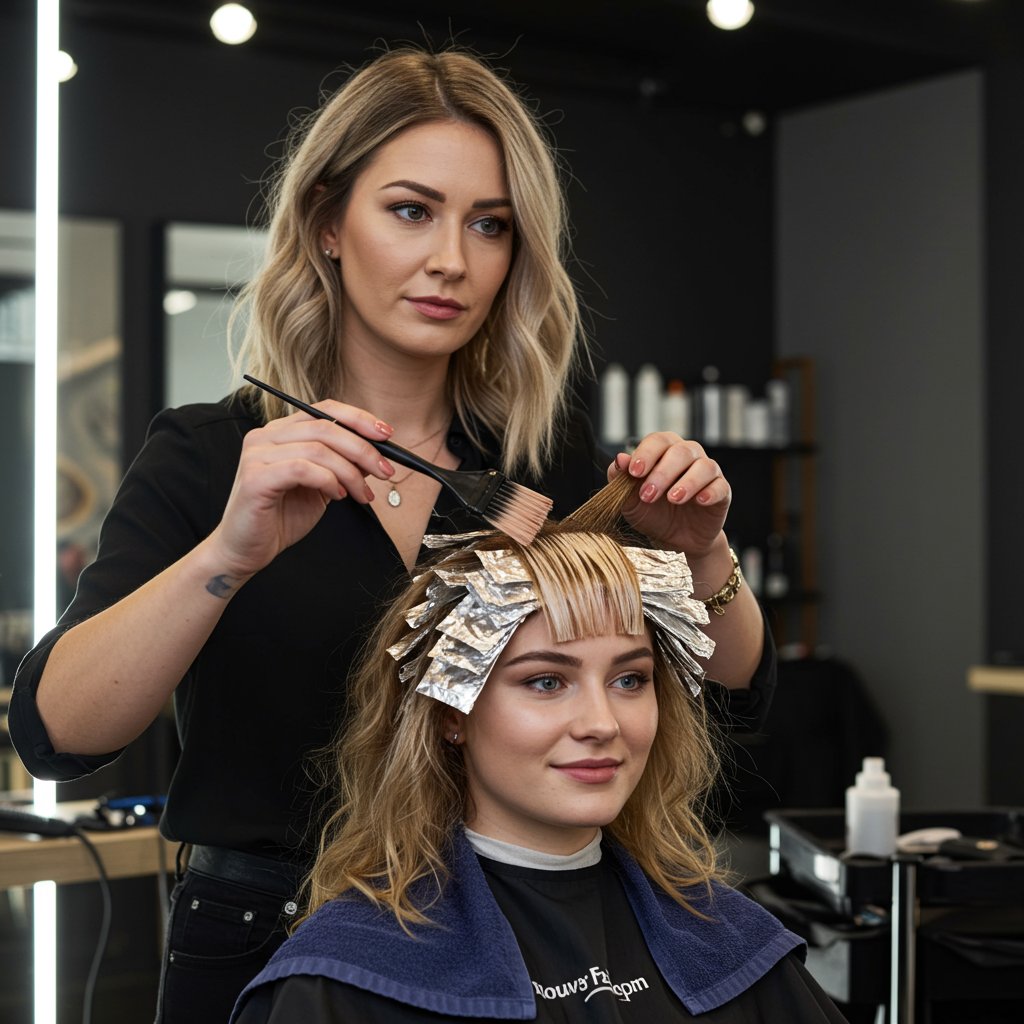
The "Money Piece": Framing the Face
The 'money piece' refers to the bold, face-framing highlights placed at the front of the hair. This technique is incredibly popular because of its high-impact, transformative effect. By placing the brightest highlights around the face, you instantly draw attention to your eyes and cheekbones, brightening your entire complexion. It’s a relatively low-commitment way to make a significant change, as it can be added to existing color or used as the primary feature of a new look. When combined with deeper tones or lowlights throughout the rest of the hair, the money piece creates a powerful focal point and an immediate sense of depth.Underneath Color Panels: The Secret to Depth
A more subtle but equally powerful technique is the placement of lowlights in the under-layers of the hair, particularly at the nape of the neck and around the interior. This creates a darker, richer foundation that acts as a shadow. When the lighter, highlighted top layers fall over this darker base, the contrast makes the top layers appear brighter and more vibrant. This is a key strategy for making fine hair look denser at the root and creating a 'peekaboo' effect of richness and depth as the hair moves.Balayage vs. Foils: Different Tools for Different Dimensions
The tools used for application also dictate the final look. Traditional foils allow for precise, controlled placement and a more uniform, defined result. They are excellent for creating significant lift and a structured pattern of highlights and lowlights, leading to clear-cut dimension. Balayage, on the other hand, is a French freehand painting technique. The color is swept onto the surface of the hair, creating a soft, sun-kissed, and natural-looking graduation of color. Balayage is superb for creating soft, blended texture, while foils are often superior for creating structured, graphic depth.---
Customizing Your Dimension: Choosing the Right Shades
Achieving beautiful, natural-looking dimension isn't just about light versus dark; it's about choosing the right light and dark shades. The perfect combination of highlights and lowlights should complement your natural base color, your skin tone, and your eye color. A thorough consultation with an experienced colorist is crucial to determine the most flattering palette for you. They will analyze your undertones and discuss your lifestyle and maintenance preferences to design a custom color formula that looks like it was made just for you.
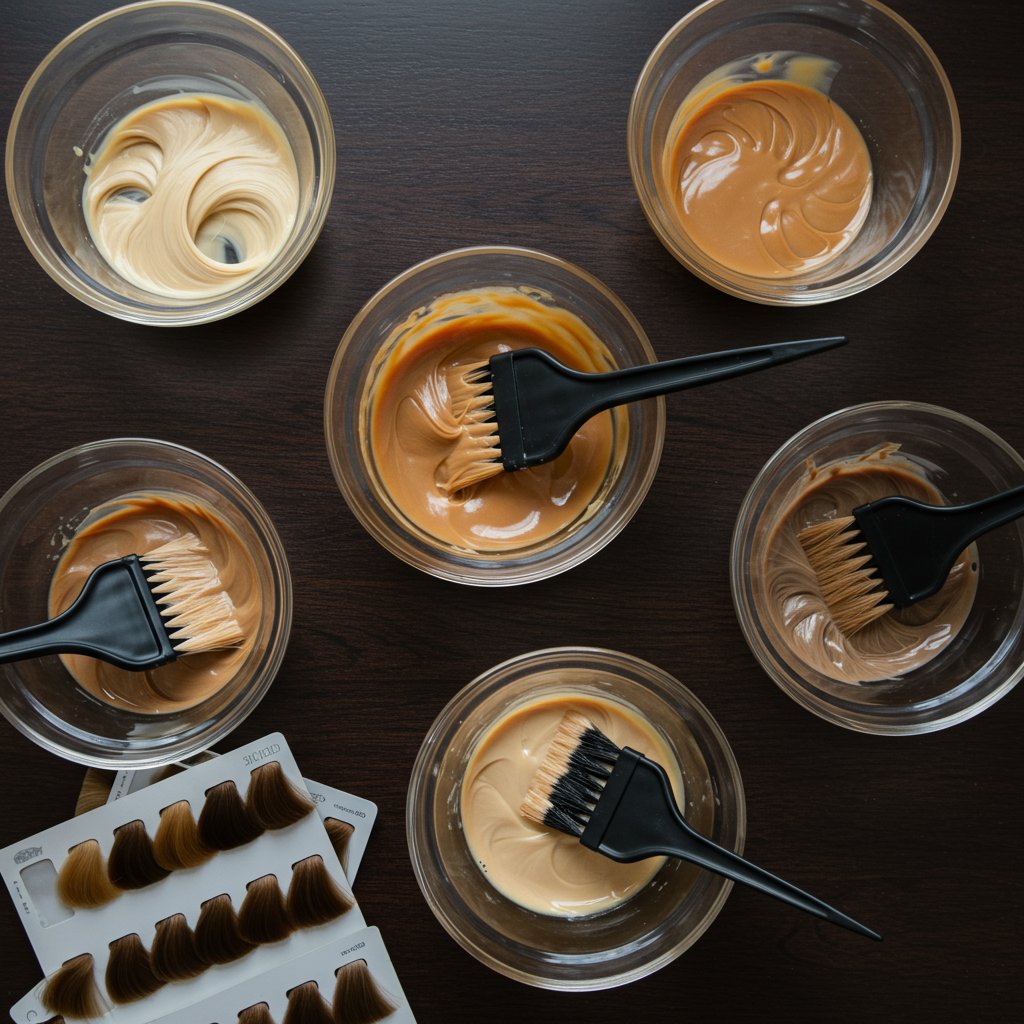
Working with Your Base Color
A general rule of thumb for a natural look is to keep highlights within two to three shades of your base color and lowlights one to two shades darker. This ensures a seamless blend and a believable, 'born-with-it' effect. For example, a dark brunette might opt for rich caramel highlights and deep espresso lowlights. A natural blonde might choose pale, creamy highlights and a honey-toned lowlight for depth. Straying too far from the base color can result in a look that is harsh or stripey, while staying within this range creates a sophisticated and cohesive result.Skin Tone and Eye Color Considerations
The tone of your highlights and lowlights—whether they are warm, cool, or neutral—is just as important as their level. If you have warm undertones in your skin (yellow, peachy, golden), you'll likely look best with warm-toned colors like honey, gold, copper, and caramel. If you have cool undertones (pink, red, blue), you'll be flattered by cool tones such as ash, platinum, beige, and mocha. A skilled colorist can use this information to select shades that make your skin glow and your eyes sparkle, creating a harmonious overall look.---
The Impact on Different Hair Types and Styles
The principles of using highlights and lowlights to create depth and texture are universal, but their application must be adapted to different hair types and styles. What works for fine, straight hair may not be the best approach for thick, curly hair. A professional stylist will tailor their technique to work with your hair's natural tendencies, ensuring the color enhances the cut and texture rather than fighting against it. This customized approach is what elevates a good color job to a great one.
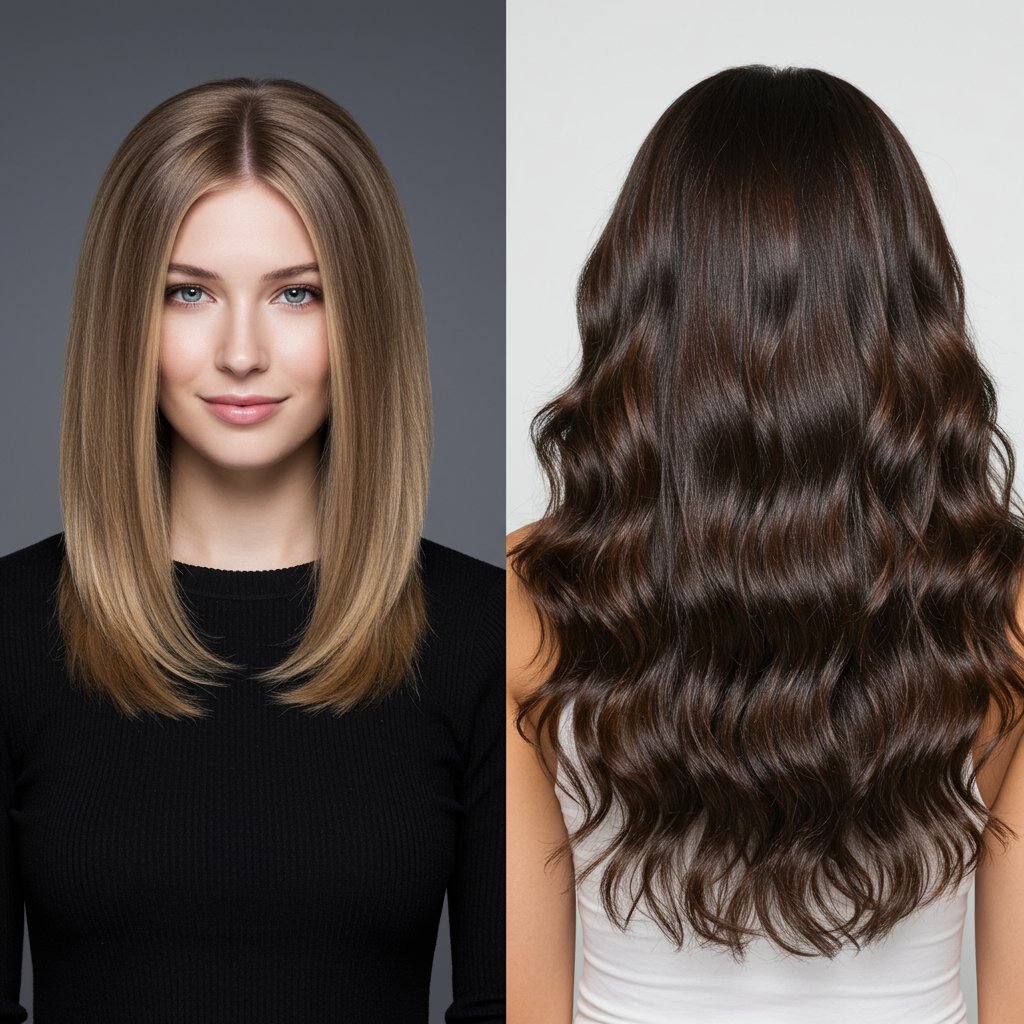
Fine Hair: Creating the Illusion of Fullness
For those with fine or thin hair, the primary goal is often to create the illusion of more volume. Lowlights are the hero here. By adding darker panels underneath and throughout the interior of the hair, you create shadows that make the hair appear denser and thicker. Combining these with subtle highlights on the top layers adds dimension without sacrificing the illusion of fullness. Over-highlighting fine hair can sometimes make it look thinner, so a balanced approach is key.Thick Hair: Adding Movement and Breaking Up Bulk
Thick or coarse hair can sometimes appear heavy and lack movement. In this case, highlights are used to break up the visual density. By scattering lighter pieces throughout the hair, especially through the mid-lengths and ends, you can create an airy, lighter feel. This adds internal movement and prevents the hair from looking like a solid mass. Lowlights can still be used to add richness, but the focus is typically on using light to create texture and flow.Straight vs. Curly Hair
Placement strategies differ significantly between straight and curly hair. On straight hair, highlights and lowlights can be placed more symmetrically and precisely, as every strand is visible. Techniques like 'microweaving' or 'babylights' create a very fine, blended, and natural look. On curly hair, the placement must be more organic, following the unique curl pattern of each individual. Color is often painted onto larger ribbons or curl families to ensure the dimension is visible and doesn't get lost in the texture, enhancing the shape and definition of each curl.---
Maintaining Your Multidimensional Masterpiece
Investing in a beautiful, dimensional hair color is only the first step. Proper aftercare is essential to protect that investment, keeping your colors vibrant, your tones true, and your hair healthy. Highlights and lowlights, like any chemical service, require a dedicated maintenance routine both at home and in the salon. Protecting your hair from fading, brassiness, and damage will ensure your dimensional color looks just as stunning weeks after your appointment as it did the day you left the salon.
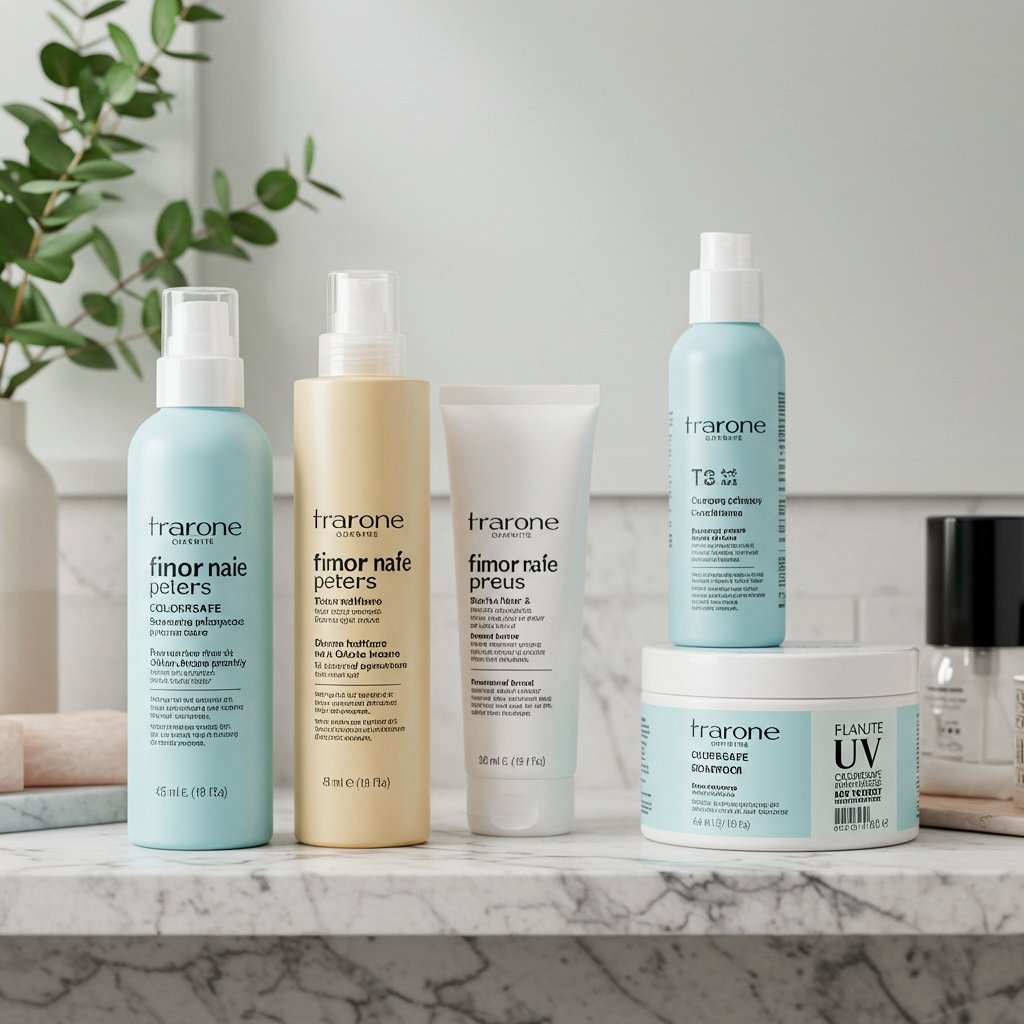
Color-Safe Haircare Regimen
The single most important thing you can do at home is use professional-quality, color-safe hair products. Look for shampoos and conditioners that are sulfate-free, as sulfates can strip color and moisture from the hair. Incorporating a weekly deep-conditioning mask or treatment will help replenish hydration lost during the coloring process, keeping your strands strong and shiny. Additionally, using a heat protectant spray before any heat styling is non-negotiable to prevent color fading and damage.Toning and Glossing Treatments
Over time, highlights can be prone to turning brassy (yellow or orange), and lowlights can fade. A salon glossing or toning service is a quick and effective way to counteract this. Typically performed between full color appointments, a gloss deposits sheer color to refresh tones, correct brassiness, and add incredible shine. It's like a topcoat for your hair color, sealing the cuticle and reviving the vibrancy of your highlights and lowlights.Scheduling Touch-Ups
The frequency of your touch-up appointments will depend on the technique used and how quickly your hair grows. A soft, blended balayage can often grow out gracefully for several months. More traditional foiled highlights that go right to the root will require touch-ups every 6-10 weeks to address regrowth. Work with your stylist to create a maintenance schedule that fits your lifestyle and budget to keep your dimensional color looking its absolute best.---
Pro Tips for Your Dimensional Color Journey
- Bring Inspiration Photos: A picture is worth a thousand words. Show your stylist photos of hair color you love, but also be open to their expert opinion on how to adapt that look for your hair type and features.
- Trust the Consultation: The consultation is the most important part of your appointment. Be honest about your hair history, your budget for maintenance, and your daily styling routine.
- Start Subtle: If you're new to dimensional color, you don't have to go for a dramatic change. You can start with a few subtle balayage pieces or face-framing highlights to see how you like it.
- Invest in At-Home Care: Professional hair color is an investment. Protect it with the high-quality products your stylist recommends. It makes a huge difference in the longevity of your color.
- Protect from the Elements: The sun's UV rays can fade color just like they can damage skin. Use a UV protectant spray for hair or wear a hat during prolonged sun exposure.
- Embrace the Evolution: Your dimensional color will subtly change and evolve between appointments. A glossing service can be a great way to tweak the tone and embrace a slightly different look without a full color service.
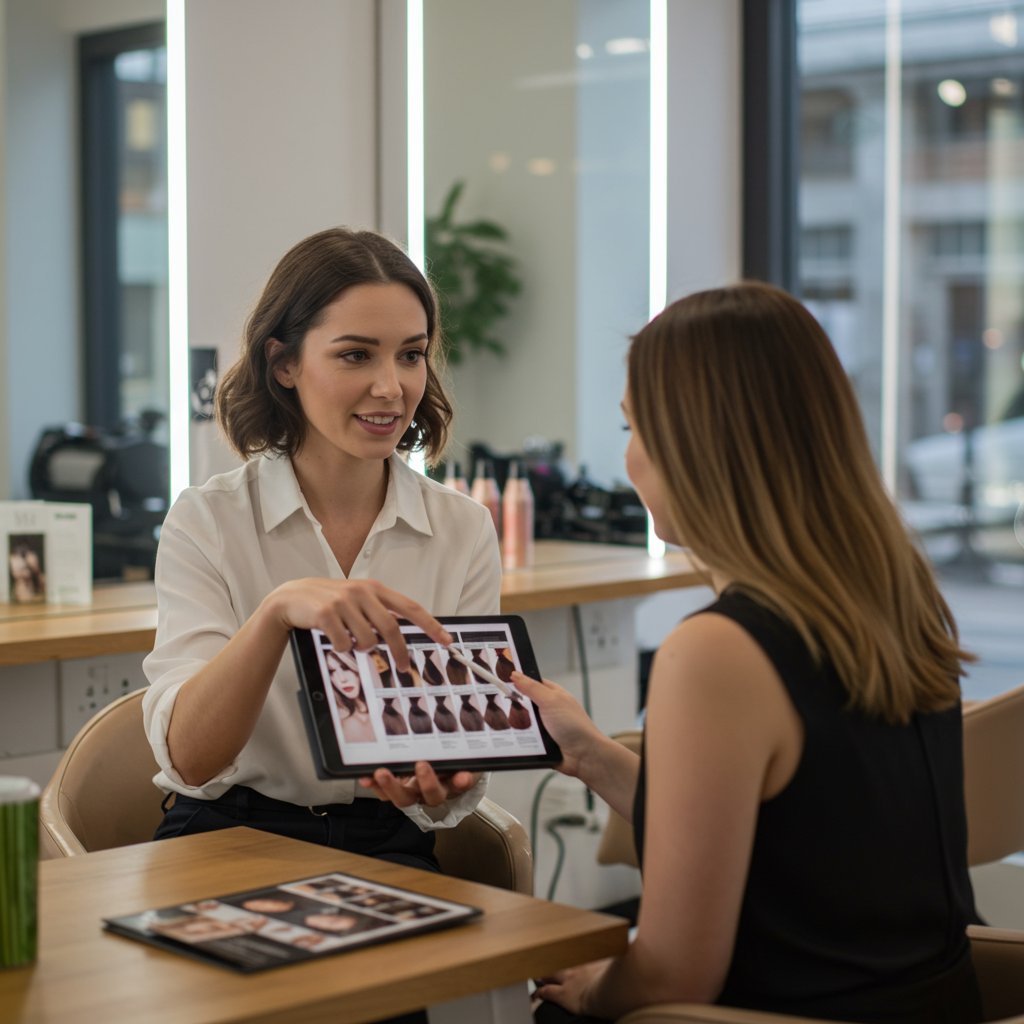
---
Frequently Asked Questions About Highlights and Lowlights
Can I get highlights and lowlights at the same time?
Absolutely! This is a very common and recommended practice for creating the most natural-looking, multidimensional color. A stylist will use different formulas and strategically place foils or painted sections to apply both lighter and darker pieces during a single service, resulting in a beautiful blend of depth and brightness.How much damage do highlights and lowlights cause?
Modern hair color technology and bond-building treatments (like Olaplex) have significantly reduced the potential for damage. While any chemical process can affect hair integrity, an experienced colorist will take every precaution to maintain the health of your hair. Lowlights, which use deposit-only color, are generally less damaging than highlights, which require lifting the hair's natural pigment.How long does a salon appointment for dimensional color take?
The duration can vary widely depending on your hair length, thickness, and the complexity of the desired look. A partial highlight service might take 2-3 hours, while a full head of highlights and lowlights with a haircut and style could take 3-5 hours or more. Always allow ample time and consult with your salon when booking.Will lowlights make my hair look darker overall?
Not necessarily. When placed strategically, lowlights are designed to create depth and contrast, which actually makes your highlights and base color appear brighter. They add richness without dramatically darkening your overall look, unless a significant shift towards a darker shade is your goal.What's the difference between balayage and traditional highlights/lowlights?
Balayage is a freehand painting technique that creates a soft, sweeping, and natural-looking graduation of color, often focused on the mid-lengths and ends. Traditional highlights and lowlights are typically applied using foils, which allows for more precise placement from root to tip and often results in a more defined, uniform pattern of color.Are highlights and lowlights good for covering grey hair?
They can be an excellent option for blending grey hair, especially for those who are less than 50% grey. Highlights help the greys blend in with the lighter pieces, making regrowth less noticeable than with a solid color. Lowlights can be used to add depth back into hair that is becoming predominantly grey or white, creating a more natural-looking result.---
Conclusion: Elevate Your Hair with Depth and Texture
Moving beyond a single shade and embracing the world of dimensional color is the single most effective way to elevate your hairstyle. The artful practice of using highlights and lowlights to create depth and texture is a transformative service that offers bespoke results for every individual. It's a collaboration between you and your stylist to craft a look that is not only beautiful but also intelligent—a look that enhances your cut, complements your features, and solves common hair concerns like a lack of volume or movement.
Whether you desire a subtle, sun-kissed enhancement or a bold, high-contrast statement, the principles remain the same: light and shadow working in harmony to create a visual masterpiece. This technique offers unparalleled customization, ensuring your hair color is as unique as you are. To explore the possibilities for your own hair, the next step is to consult with a professional colorist who can analyze your hair and design a dimensional color plan that will bring your vision to life.


